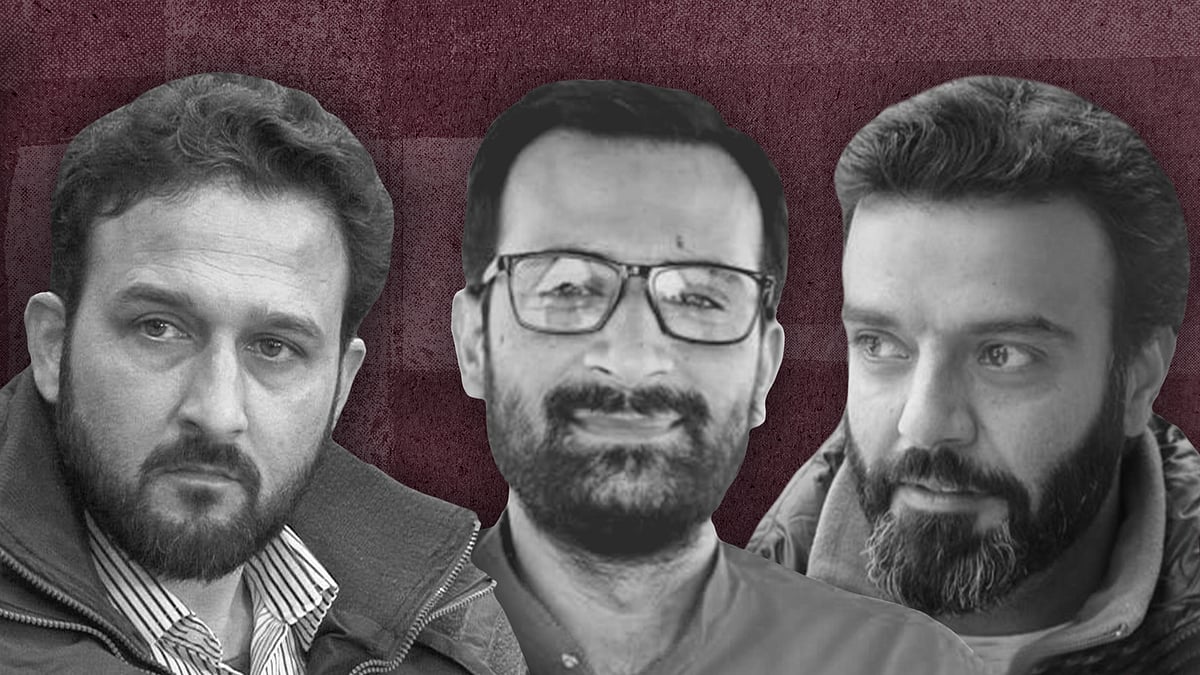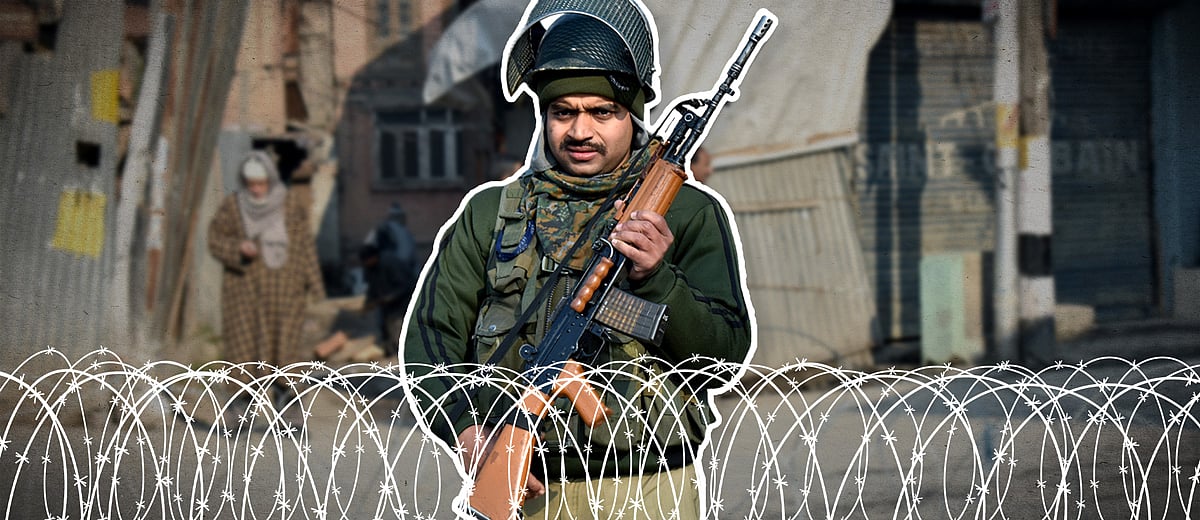Was Kashmir being readied for demographic change even before Article 370 was scrapped?
The Srinagar Master Plan 2035, approved a few months before Jammu and Kashmir was stripped of its special status last year, holds a clue.
Imagine Srinagar 15 years from now. Instead of spools of barbed wire ringing the iconic Lal Chowk, there are slick shopping malls. The Dal Lake, instead of being impinged upon by houseboats, is a conservation site with floating gardens. The bypass road skirting the city’s southern and western edges is the gateway to a Special Investment Corridor.
This is Kashmir’s capital envisioned in the Srinagar Master Plan 2035. What is behind this vision? Whom is it for? And, crucially, was it merely a coincidence that this vision of the city’s future appeared just a few months before the Kashmiri people were stripped of their constitutional safeguards?
Planning has long been used by rulers to recast the future of a place and as a metric of development. And development, as McGrath and Watson point out, “is firmly rooted in colonial discourse and practice”.
For the Indian state, the recasting of Srinagar’s future is achieved not through a single transformative act but a continuous process of creating a system of domination. The transformation is brought about through the use of the administrative apparatus, the legal system, the economic order, the monopoly of violence, and, of course, cultural domination.
Here, I aim to examine planning documents and policies for Srinagar to understand whom they are meant to benefit? Who will be citizen and who second-class citizen in this urban fabric? And does the Master Plan foretell a migrant influx into Srinagar?
The Master Plan
The Srinagar Master Plan 1971-91 was the first comprehensive planning effort made by the Jammu and Kashmir government after 1947. It mostly covered low-lying areas, wetlands and flood absorption basins adjacent to the Flood Spill Channel. The implementation of the plan missed the deadline and was extended by a decade to 2001, apparently because of the outbreak of armed insurgency in Kashmir in the late 1980s.
The 1971-91 plan was followed by the Srinagar Master Plan 2021. The 2035 plan is the third statutory plan, drafted for a threshold population of three million by 2035. Its key features include the expansion of Srinagar metropolitan planning area by 84 percent, from 416 sq km currently to 765 sq km. About 57 percent of this area – which includes wetlands, water bodies, forests, farmland, graveyards, cremation grounds, land for defence use – is either unsuitable or restricted for development. This leaves just about 329 sq km that is developable.
Remaking the Dal lake
In the Indian media, the Dal has mostly been covered as an issue of conservation or of the relocation and rehabilitation of the lake dwellers. This focus flows from a 2000 plan to rehabilitate the Dal dwellers who had been identified as encroachers at Rakh-e-Arth Colony in Bemina, on the outskirts of the city. The colony is built on marshy land and has poor infrastructure, leaving it susceptible to natural disasters.
Here, it is crucial to examine the connection between the Draft Houseboat Policy of June 2020 and the Master Plan 2035, which was approved early last year. The policy, which was framed without a meaningful stakeholder consultation, forbids the construction of new houseboats on the Dal and the adjacent Nigeen lake, and makes the refurbishing of old ones a bureaucratic nightmare. It’s an attempt to control the ownership of houseboats on the twin lakes and cripple a source of livelihood for Kashmiris. The policy has been described as “a death knell for the already floundering industry which has been an intrinsic part of Kashmir's cultural heritage for over 150 years”.
The Master Plan 2035 acknowledges the relationship of the Dal dwellers with the lake, but only so far as they fulfill its touristic and atheistic demands. This is clear from the plan to revive the lake’s floating gardens, which have been categorised as special areas. “Mode of transport and housing along the floating garden provides a unique character for promotion of cultural tourism in the region,” the Master Plan states, adding that houseboats and shikaras are closely associated with the waterways between the floating gardens.
On the whole, the plan envisions the Dal as a tourist paradise, with shikara gateways, cycle tracks, boulevards, cafes, organic farms, and water sports facilities. As for the people living on the lake, they are only seen as subjects for relocation.
This imagination of the Dal is going to gentrify Srinagar, which was already staring at such a prospect in the Smart City plan of 2017.




Collectively, this is what Maps 1, 2, 3, and 4 tell us:
The 2035 Master Plan aims to revive the Dal lake and conserve it sustainably by using its catchment area in a manner that ensures its posterity while simultaneously tapping its tourism potential. But looking at the range of tourism-related works contained in the Master Plan, the purpose, it seems, is mostly to exploit the lake commercially. In fact, even a proposal for having floriculture and organic herbal gardens is allied to tourism. At the same time, the Dal’s inhabitants are considered encroachers who need to be relocated away from the lake. Their compensation for the loss of their homes and livelihoods will be a token gesture: they shall be employed to clean the lake as a temporary source of livelihood.
Although the plan acknowledges the "historical relation between Dal lake and Dal dwellers”, it proceeds to relocate them without a clear rehabilitation plan so as to make way for a tourism plan that is branded as ‘green, sustainable development’. It is ironic that the plan seeks to evict people who are historically and culturally rooted to the Dal lake in the name of conservation, only to create a tourism hub for outsiders.
The plan also aims to tax tourism services on and related to the Dal, meaning that the area is set to be gentrified, with the local community with deep cultural and historical ties to the lake being pushed out. In essence, from a precious asset, the Dal lake will be turned into a commodity to be exploited in the name of its own preservation.
Special Investment Corridor

In this map, which shows the expanded planning area of 765 sq km, the bypass road running to the south and west of the city is envisaged as the gateway to the Special Investment Corridor, comprising presumably an array of IT parks and industrial units that Lieutenant Governor G C Murmu has approved lately.
The local planning area has been divided into 53 zones of varying density of projected population – low, medium, medium high, high. The plan sees a leap in the area demarcated as high density (from the centre of the city towards its municipal boundaries) suggesting that the likely construction of highrise residential colonies will not be an organic development but a deliberate one. The master plan also proposes creating formal and informal housing colonies through town planning schemes as well as in Special investment Corridors.
This raises the question: who exactly is supposed to live in these colonies and work in these investment corridors? Are they being planned for non-native Indian citizens who are now free to buy property and get government employment in Kashmir after the abrogation of Article 370 and the removal of Article 35A?
Kashmir’s permanent residents are fearful that their homeland will be inundated with outsiders, who will get priority in housing, jobs and education. Two recent developments have only deepened this suspicion.
One, the lieutenant governor made it clear that the purpose of the new domicile law, which gives residentship to people from outside Jammu and Kashmir, was to encourage investment. "Our one-point agenda is the development and creating opportunities for the youth,” he asserted. “Our target is a prosperous Jammu and Kashmir.”
Two, in July, the Murmu administration cleared the construction of two lakh affordable houses over the next few years. “The policy also aims to provide rental housing in which EWS families will be given dwelling units on licence basis for occupation and use for a particular period on making initial deposit and monthly charges,” it states. “Additionally, the policy also includes provisions for fast track approvals of housing in Economically Weaker Section and Low Income Group categories. Besides, it provides for their incentivisation in the form of exemptions from building permit fee, land use conversion and external development charges.”
To Kashmiri observers, this scheme is aimed at preparing Jammu and Kashmir for the expected influx of outsiders.
Remarkably, the 2035 Master Plan, approved barely a few months before the abrogation of Article 370, seeks to create a similar urban landscape. It seeks the construction of nearly two lakh houses in the local planning area and the generation of over a million jobs. Moreover, “to harmonise residential development”, the Master Plan “envisages re-densification of low and medium density areas, especially the along North-South axis. These areas are envisaged to be planned with increased densities for efficient use of limited suitable land. Besides, satellite townships at Ganderbal, Bemina, Pampore, Budgam and dormitory townships at Nowgam, Lawaypora, Zakura, etc need to be developed to ensure supply of adequate serviced land to increase housing choices for people of all categories.”
The Special Investment Corridor and surrounding places will be marked by a patchwork of government offices, industrial zones and highrise residential complexes.
In the light of this, one may well ask: was Srinagar being readied for a demographic influx even before Kashmir was stripped of its special status?
Studying the 2035 Master Plan carefully shows that it was the first clue that the control of Kashmir would be taken away from Kashmiris through "interventions" in the name of development, that their autonomy would be wrested away through legal and administrative changes. That’s what happened.
Evita Das is an urban researcher based in Delhi who works on issues of caste and housing. She is a contributor to Counting Days, a campaign to document everyday issues of Kashmir, and helped prepare the report “The Siege: A Year Since Abrogation”. She is also part of the National Alliance of People’s Movements.
 Betrayal and loss of credibility: Kashmir's political parties have spent a year in limbo
Betrayal and loss of credibility: Kashmir's political parties have spent a year in limbo
 A decade of siege, bloodshed, and a revolution of the spirit in Kashmir
A decade of siege, bloodshed, and a revolution of the spirit in Kashmir